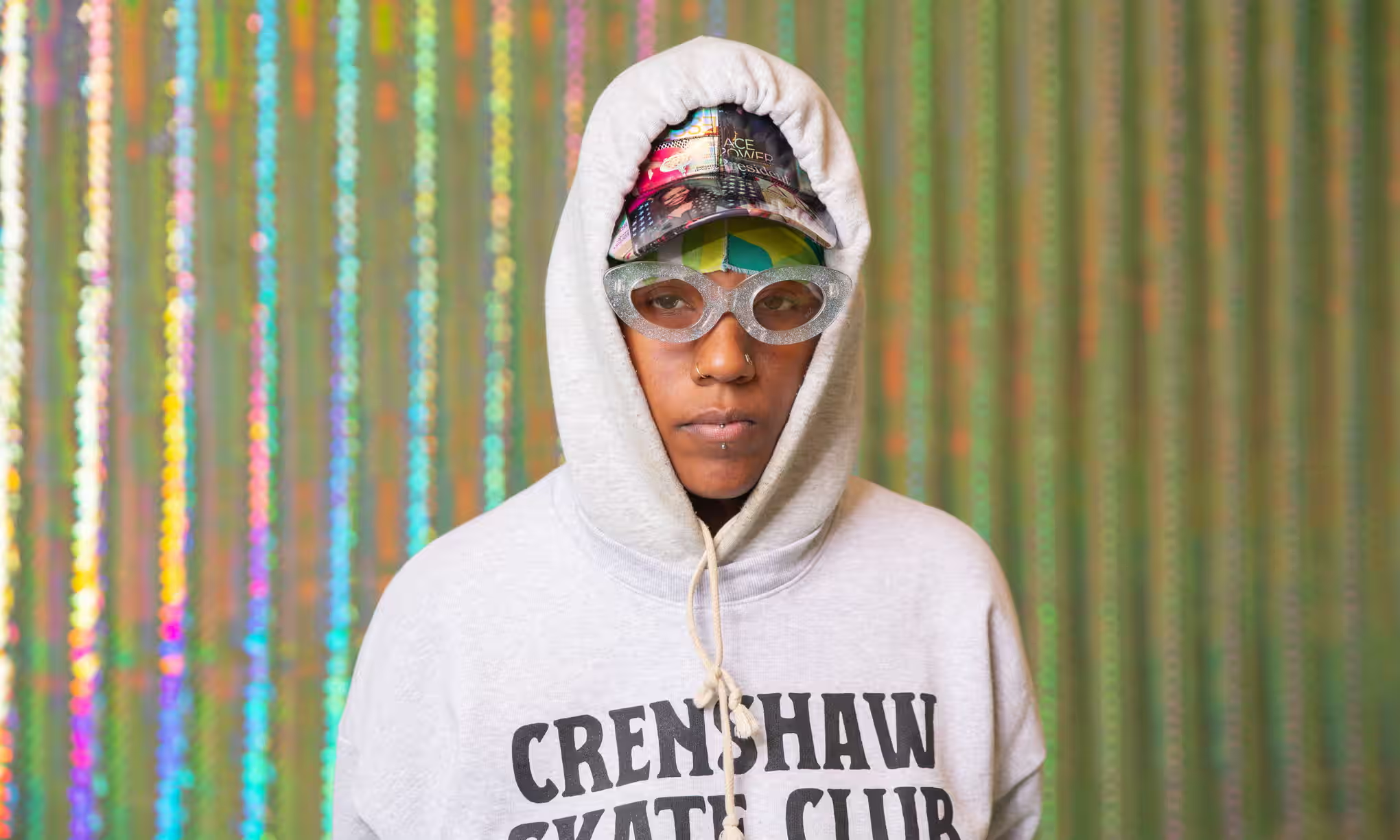The Observer
Lauren Halsey


“Funk is oxygen. It’s life,” according to Lauren Halsey. The Los Angeles artist can recall the day that funk music changed her life. It was the early 00s and she was on her parents’ computer, downloading music from the filesharing website LimeWire, as she did every night, when she happened upon the entire discography of the band Parliament. “It turned me out,” she reminisces fondly. Of the track How Do Yeaw View You?, by Parliament sister group Funkadelic, she says: “Hearing that and believing in it in my most formative years gave me a certain confidence to go for my funk.”
Later, once YouTube had come into existence, Halsey watched Parliament’s Mothership Connection P-Funk Earth tour and made it her life mission to become a member. “Obviously I didn’t make it in the band,” she laughs. “But they’re huge references for me. So much of what I make is in response to the context of funk. It’s another layer. It’s another portal of possibility.”
Defining funk is a difficult feat, but its foundations lie in Black empowerment, freedom and expression. “What made [Parliament] so attractive to me as a kid coming into my sexuality is that I saw ‘straight’ men queering themselves in the band. George [Clinton] with the beautiful long blond wig. The dresses. Everything was so slippery. To see folks shapeshift and be able to perform all sorts of identities within one body. The juxtapositions and collaging – I’m doing the same thing [with my work].”
Halsey’s ornate, multicoloured, architectural works have received international attention in recent years. She won the Frieze artist award in New York in 2019, and has presented large-scale outdoor monuments at the Metropolitan Museum of Art’s roof garden in 2023 and this year’s 60th Venice Biennale. Her work is in the collections of Museum of Contemporary Art, the Guggenheim Museum and the Whitney Museum. In 2022, the New York Times wrote that Halsey “has achieved acclaim and prominence that is rare for an artist of just 34”. Now aged 37, she’s just opened her debut solo UK show, Emajendat – an immersive “funk garden” – at London’s Serpentine South Gallery.
“I’m approaching this project as sort of study for a garden that I would want to have built in my neighbourhood – a public space,” Halsey tells me over video call, adding that her site-specific installation, which responds to Kensington Gardens, is a “sanctuary to reflect, to pay homage to the living, to the dead and to the fantastical”. Visitors can expect a prismatic glass floor, walls made from CDs, figurines, “funkmounds”, a live water fountain, sand dunes and a huge collage.
The exhibition is a testament to Halsey’s maximalist style. Her work is a graphic bombardment of colour, text, Black figures, hairstyles, signs and phrases as an ode to Black culture and Black history. She creates elaborate ornamented landscapes that embody her fascination with collecting ephemera. You’ll find ancient Egyptian hieroglyphs alongside the faces of hip-hop great and spaceships. It’s a melting pot of the past, present and future.
Still, beyond her energetic aesthetic, Halsey’s work is distinctly LA, more specifically South Central. It’s where she and her family have lived for several generations. “I remember when my aunt, who’s a few years older than me, got her [driver’s] licence and my life changed. [We] would hit the streets. As a passenger I saw so much. South Central is so large.” Halsey’s mixed-media installation My Hope, for example, captures the essence of her neighbourhood in all its density; faux palm trees, a church service complete with miniature figurines, Cadillacs, business signs and posters with slogans such as “Reparations Now!”. “I’m always trying to capture that too muchness [in] my work. The excess.”
Halsey was born in LA in 1987 to an accountant father and a schoolteacher mother who was “always bringing me home art [and] craft materials”. Her father dreamed of being a musician and in turn wanted Halsey to pursue piano, but “it wasn’t for me”, she says. She desperately wanted to make it into the US Women’s National Basketball Association (WNBA). “I was obsessed with basketball,” she says. “But my parents wanted me to go to a school that was hardcore academic. [It] didn’t even have a basketball gym.”
She eventually gave up on her WNBA dreams and ventured into art. Her interest in architecture came out of an encouraging conversation with LA-based artist Dominique Moody. “I knew I didn’t want to become an architect with a capital ‘A’ [but] I thought I could navigate the language of architecture through art.” She went on to earn a bachelor of fine arts from the California Institute of the Arts and a masters from Yale in 2014.
Pride in home is at the forefront of Halsey’s work. In opposition to the heavy hand of gentrification that plagues Los Angeles, her pieces attempt to preserve and transmit her immediate environment. Still, given how hyper-specific her output tends to be, how does she strike the balance between presenting something so culturally defined without clearing the way for voyeurism? “I use the museum truly as a space to host these studies and proof of concepts for the best iteration of the architecture that will return back home,” she says. Thinking global but acting local seems to be Halsey’s holy grail. Her practice is as much about transporting her community to the world as it is about ensuring that it reaps the benefits.